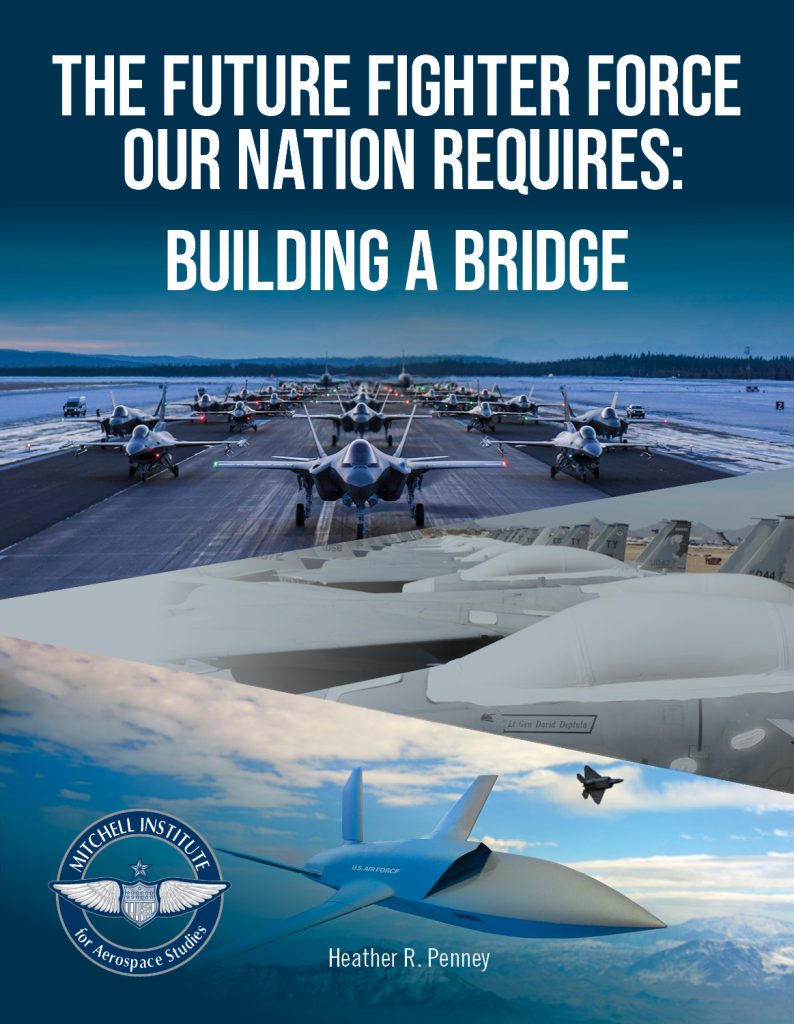ARLINGTON, VA | October 26, 2021 — The Mitchell Institute for Aerospace Studies is pleased to announce a new Research Study, The Future Fighter Force Our Nation Requires: Building a Bridge, by Heather Penney, Senior Resident Fellow at the Mitchell Institute.
The U.S. Air Force’s fighter force is in crisis. After three decades of canceled, curtailed, and delayed investment in fighter aircraft modernization, the nation now finds itself in major need of these capabilities with far too few advanced fighter aircraft to meet demand. This is not just an Air Force problem; it affects every aspect of U.S. national security. No form of power projection in any domain is viable without control of the sky. Ships at sea, forces on the ground, space control centers, cyber facilities, logistics hubs, and more are simply not survivable when subject to high-intensity attacks from the sky.
Penney analyzes the priorities, issues, and other dynamics that are shaping the Air Force’s fighter force and recommends actions that will help the service build a bridge to a force that will meet the nation’s security needs now and in the future. There are five major components to this analysis. The first addresses how the Air Force should manage its aging legacy fighters. The second issue the Air Force must come to terms with is the deleterious impact that acquiring the “new-old” F-15EX will have on the service’s ability to transform its fighter force into one that is relevant to peer conflicts. Third, the service must address concerns with the capabilities and availability of upgraded F-35A aircraft as well as the overall affordability of the F-35 program. Importantly, the Air Force must revisit its decision to slow production rates to the point that it is insufficient to recapitalize its legacy fighters. Fourth, the service must ensure that capabilities needed for the air dominance mission are not gapped. To do so, the Air Force may need to extend the service life of its small F-22 force well into the 2030s. At the same time, it must remain fully committed to developing its Next Generation Air Dominance (NGAD) family of systems. Finally, the Air Force should initiate the development of an alternate stealthy fighter that could begin fielding in the early 2030s. In combination, these actions would help ensure the Air Force has a fighter force with the capabilities and capacity needed to meet National Defense Strategy requirements with a budget that is under stress to meet many other modernization needs.
The Mitchell Institute’s Research Studies serve as an authoritative avenue for innovative, in-depth, insightful, and effective ideas and solutions for strengthening America’s aerospace power.
For media inquiries, email our publications team at publications.mitchellaerospacepower@afa.org
Copies of Research Reports can be downloaded at https://www.mitchellaerospacepower.org/publications
